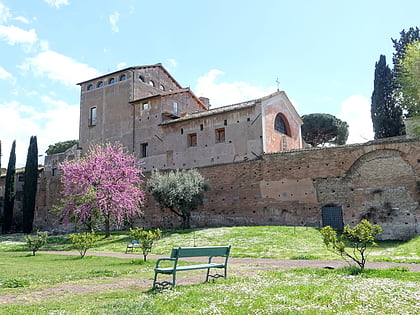Colosseum, Rome

Facts and practical information
The Colosseum, an enduring icon of Imperial Rome, stands as one of the most remarkable architectural feats in the world. This colossal amphitheatre, nestled in the heart of Rome, Italy, has withstood the ravages of time to tell tales of gladiatorial combat, public spectacles, and the grandeur of ancient Roman engineering. Constructed from concrete and sand, it is the largest amphitheatre ever built, measuring approximately 189 meters in length, 156 meters in width, and 50 meters in height.
Commissioned by Emperor Vespasian of the Flavian dynasty around AD 70-72, the Colosseum was completed in AD 80 by his successor, Titus. Originally known as the Flavian Amphitheatre, it could hold an estimated 50,000 to 80,000 spectators, boasting four floors of seating with a complex system of entrances and exits to facilitate the flow of the massive crowds.
The Colosseum was the stage for gladiatorial contests, mock sea battles, animal hunts, executions, re-enactments of famous battles, and dramatic performances based on Classical mythology. Its hypogeum, an intricate underground structure, housed the gladiators and animals before they were hoisted into the arena through trapdoors.
Despite suffering extensive damage over the centuries due to natural disasters and stone-robbery, the Colosseum remains a powerful symbol of Imperial Rome. It is a UNESCO World Heritage site and one of the most popular tourist attractions in Italy, drawing millions of visitors from around the globe each year.
The amphitheatre is open to the public, offering tours that include access to the arena floor, the underground chambers, and the upper tiers. Visitors can marvel at the ingenuity of ancient Roman architecture and imagine the roar of the crowd during the height of the Colosseum's glory. In the evening, the structure is illuminated, casting a majestic glow that accentuates its historic grandeur.
Colosseum – popular in the area (distance from the attraction)
Nearby attractions include: Roman Forum, Arch of Constantine, Tabularium, Arch of Titus.
Frequently Asked Questions (FAQ)
Which popular attractions are close to Colosseum?
How to get to Colosseum by public transport?
Bus
- Colosseo • Lines: 117, 118, 51, 75, 85, 87, n2, n2;nMB (2 min walk)
- Colosseo/Salvi • Lines: 117, 51, 85, 87 (2 min walk)
Tram
- Colosseo/Salvi N. • Lines: 3, 8 (3 min walk)
- Parco Celio • Lines: 3, 8 (5 min walk)
Metro
- Colosseo • Lines: B (3 min walk)
- Cavour • Lines: B (9 min walk)
Ferry
- Isola Tiberina • Lines: Battelli di Roma (22 min walk)
- Ponte Cavour (35 min walk)
Light rail
- Termini Laziali • Lines: Fc1 (22 min walk)
- Roma Termini • Lines: Fl6, Fl7 (23 min walk)
Train
- Roma Termini (23 min walk)
Trolleybus
- Volturno/Cernaia • Lines: 90 (28 min walk)
- XX Settembre/Min. Finanze • Lines: 90 (28 min walk)








 Metro / Tram / Rail
Metro / Tram / Rail









